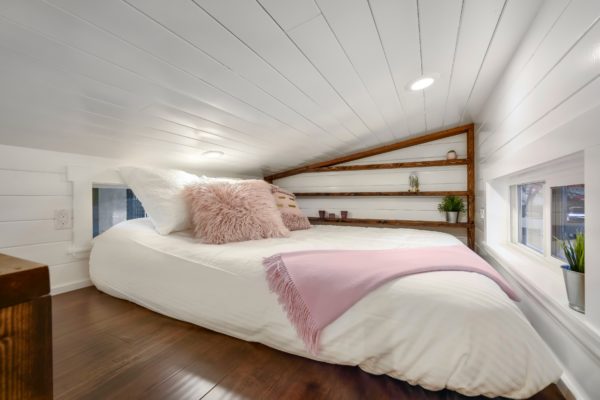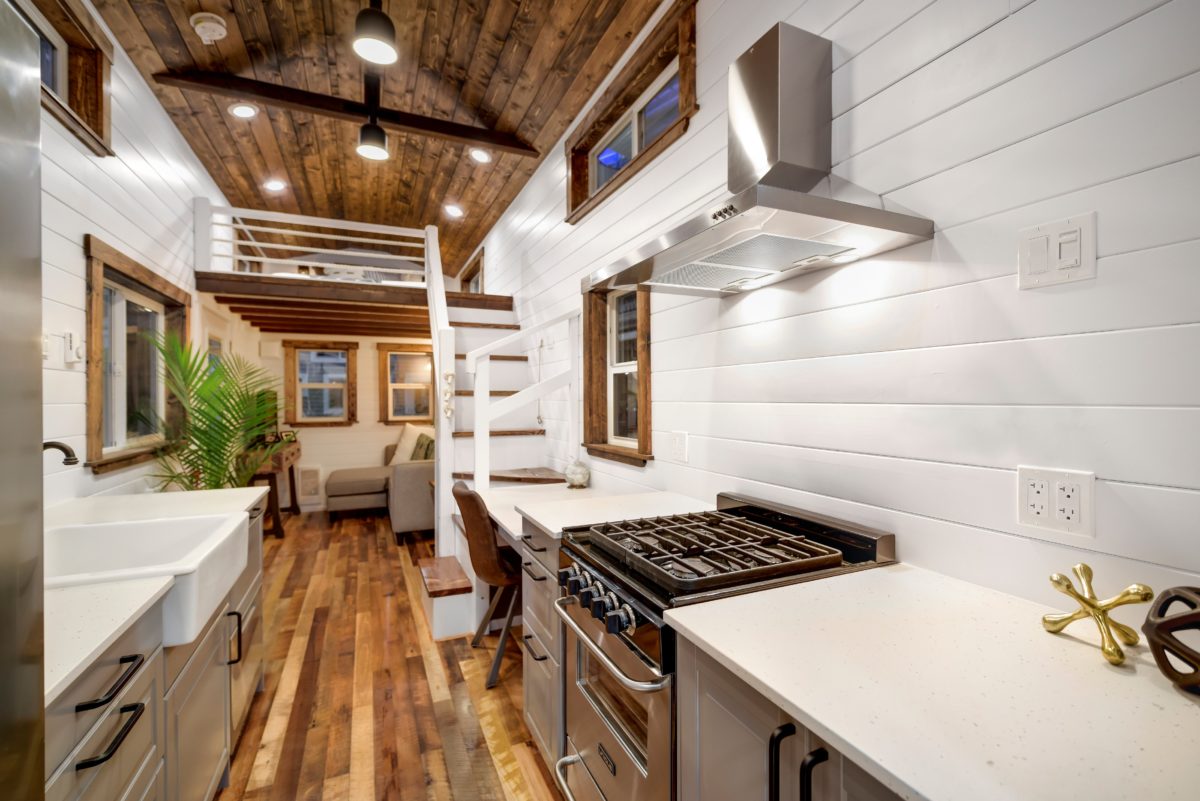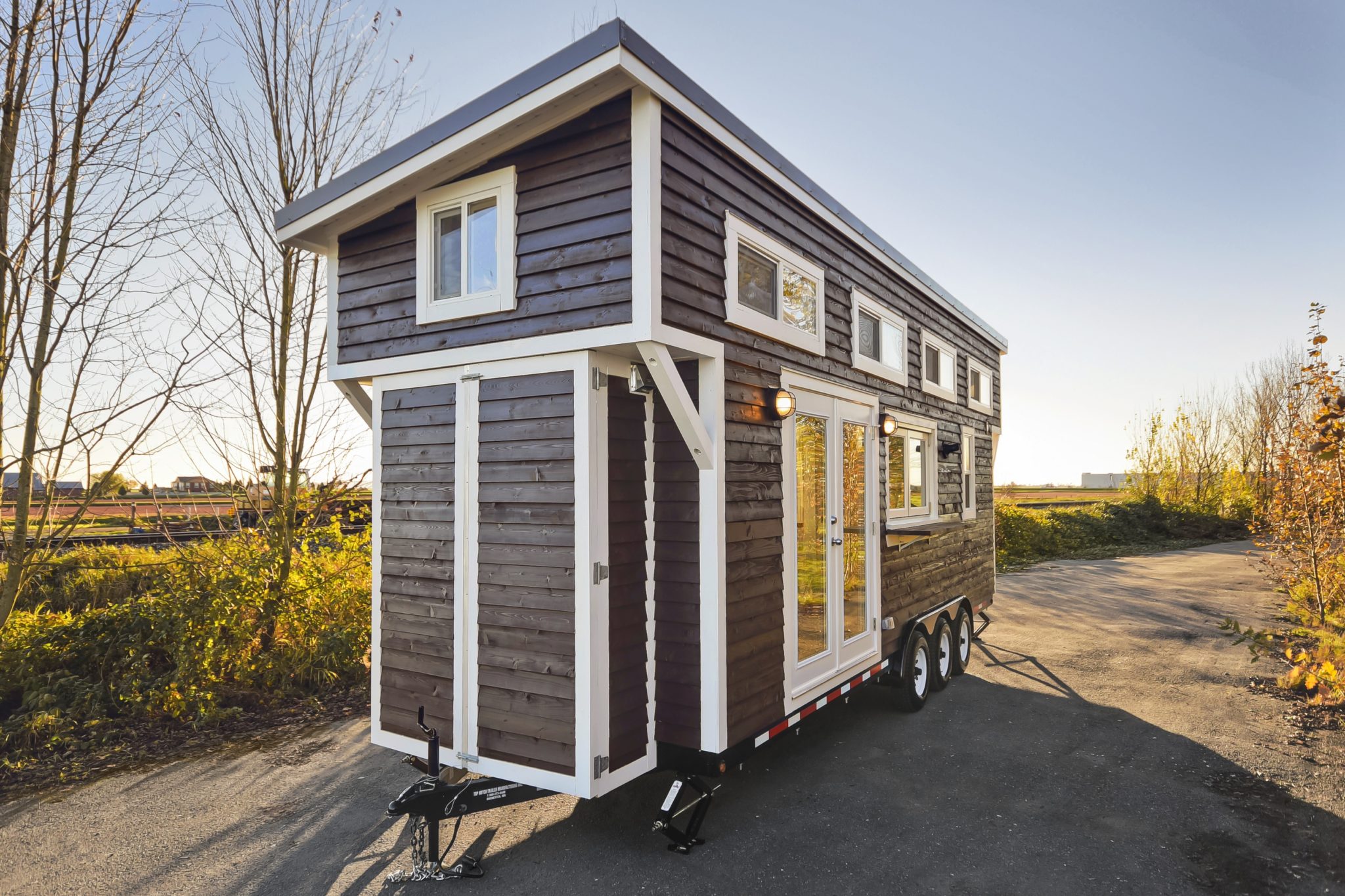In today’s crazy housing market, the thought of purchasing an entire home for $50,000 sounds much like winning the lottery. That home, however, will be tiny. Extremely tiny.
It’s a trade-off a growing number of potential homeowners are willing to take. Not only are these diminutive dwellings an opportunity to own a house without a hefty mortgage, but they provide a way of life that involves downsizing your space, simplifying your lifestyle and enjoying the freedom that a home on wheels provides.
When Samantha Gambling completed grad school at the University of B.C. (UBC), she wanted to find a stable home in Vancouver.
“I started work in the non-profit field and was looking for a secure home that would shelter me from the extreme housing market, renovictions and having to move, not to mention having to pay 80 per cent of my income on rent,” she says. “Tiny housing also falls in line with my philosophical beliefs involving ecological sustainability.”
Gambling lives in her 220-square-foot home full time. Other owners buy them as vacation homes, guest houses, ski cabins, artist studios and rental suites.
Demand is “huge,” in B.C., says Shannon Loeber, West Coast sales manager of Hummingbird Micro Homes, which is based in Fernie, B.C. Everyone wants to see what it looks and feels like inside a tiny home and almost everyone… is amazed at how much room there actually is in the home.
Ted Allsopp, owner of Hummingbird Micro Homes, says most buyers are “people wanting to be able to enjoy the freedom that smaller living brings: less expenses, less cleaning and fewer mortgage payments.”
Hummingbird pioneered Canada’s first tiny- house village, located in Terrace. Residents can rent a tiny home or roll on in with their existing house and rent a serviced pad by the month. Bluegrass Meadows Micro Village includes laundry facilities, water, sewage and snow removal.
“The attraction is the lifestyle in Terrace. There’s world-class fishing, skiing, snowmobiling, beautiful hiking, lots of activities,” says Allsopp.
Hummingbird is now looking at other sites in the Okanagan and in the Kootenays in which to build more communities.
“We’d like to build a few more villages,” says Allsopp. “This would give people great options of where to put their tiny homes, alongside other like-minded people.”

FACTBOX HOW TINY IS IT?
A tiny home is a fully functional unit totalling fewer than 500 square feet with all the amenities of a typical home, including a kitchen, bathroom and bed. It is either on wheels or has a temporary foundation.
Cost range: A typical house is around $50,000 but larger sizes can be upwards of $115,000.
Time to build: Eight to 10 weeks.
Size: A tiny home typically has around 200 square feet of livable space, although it can range from 100 to 500 square feet.
WHERE CAN I PARK MY TINY HOME?
While building her tiny house, Samantha Gambling realized she didn’t have anywhere to park it. While people were supportive of her plight, municipal regulations within Metro Vancouver restricted her from renting space on someone’s yard.
In fact, few municipalities throughout B.C. allow for tiny homes within their zoning bylaws.
Fed up with battling red tape, Gambling and Anastasia Koutalianos co-founded the BC Tiny House Collective. Their goal is to try to get tiny houses recognized as viable housing stock. Efforts have included conducting research in partnership with UBC and other institutions, public outreach and speaking with municipal governments.
In an ideal world, homeowners could offer rental space in their backyards to tiny-home owners as laneway alternatives. Outside of city centres, tiny house villages—like those now popping up in Terrace and the Sunshine Valley—offer a more affordable lifestyle or holiday option.
“We really want to create a space for tiny houses in B.C.,” says Koutalianos. “Tiny homes are not the solution to the housing crisis (within city centres), but they offer an affordable model for home ownership and play a valuable part in diversifying neighbourhoods.”
Gambling and Koutalianos say places including Vancouver, North Vancouver, Maple Ridge, Squamish, Haida Gwaii and others are showing interest—and the conversations continue.



